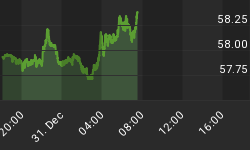With the Fed forcing interest rates low, commercial and industrial lending has picked up. That may sound like a good thing, but is it?
I suggest it's not. Competition is such that "covenant light" lending has returned in full force. "Cov-lite is financial jargon for loan agreements which do not contain the usual protective covenants for the benefit of the lending party."
Flood of Cheap Money Sparks Covenant Light Lending
Please consider Covenant-light lending making its presence felt again
Competition is feral at the institutional end of the banking industry, where quantitative easing is creating a flood of cheap money, and in the big banks a recent development has everyone talking: covenant-light lending appears to be making a comeback.
Covenant-light loans were a phenomenon of the boom that ushered in the global financial crisis. Bankers who say covenant-light lending is on the rise again say loans that are being proposed now are not as radical as the ones created ahead of the crisis, but say they are watching closely.
Covenants are designed to protect lenders from corporate implosions. They impose financial limits on the borrower, maximum gearing levels, for example, and if they are breached, the lenders can take steps to protect their position.
Bankers say now that US banks and investment banks are leading the revival of covenant-light lending. They are surprised it has returned so quickly, but acknowledge that quantitative easing has created enormous pressure.
Their best guess is that covenant-light lending is back to where it was around the middle of 2006, before the final, frenetic stage of the boom. It is lighter-covenant rather than covenant-free lending, and it is only being offered to top-rated corporations where survival and debt servicing capacity is not in question.
The local bankers wonder, nevertheless, whether the return of covenant-light lending is a sign of QE seeding another unsustainable debt boom, but they still need to work out how to respond: if the trend continues and they don't join it, their share of the institutional lending market will fall.
J.C. Penney Loan Arranged by Goldman Sachs Is Covenant-Light
On April 29, Bloomberg reported J.C. Penney Loan Arranged by Goldman Sachs to Be Covenant-Light
J.C. Penney Co. (JCP), the retailer that's working to rebound from its worst sales year, will offer fewer safeguards to lenders on its $1.75 billion financing.
The five-year covenant-light deal, which is being arranged by Goldman Sachs Group Inc., won't include financial maintenance requirements that typically prevent borrowers from loading up on debt, according to a regulatory filing today.
Surge in Commercial lending Raises Bubble Worries
Yahoo! Finance reports Surge in commercial lending raises bubble worries.
There was a time when robust growth in U.S. commercial loans was seen as a good sign for the economy, but this year a double-digit surge is being seen as a red flag.
U.S. banks reported $1.53 trillion in commercial and industrial loans in the first quarter, a 12 percent year-over-year gain.
Bankers and analysts say this big gain in C&I lending looks more like an early asset bubble than an economic breakout. The banks reported double-digit gains in 2011 and 2012, too.
Mid-size companies and publicly traded corporations are not using the loans to grease the skids of the economy for expansion. Instead, they're mostly getting cheaper credit lines or refinancing the replacement of obsolete factory equipment by dictating easy terms to banks clamoring for their business.
"With so much liquidity, banks feel a lot of pressure to make loans," said Mariner Kemper, chairman of UMB Financial Corp, a Kansas City, Missouri-based bank with $3.2 billion in outstanding C&I loans.
"There's deterioration in covenant terms and pricing and that's potentially the kind of behavior that drives a crisis."
Douglas Bryant, a senior lender for Wells Fargo in New England, calls the C&I lending shift the "return of the silly season."
"Any well-known company with a credit need is called on by a half a dozen or so banks," Bryant said. "These companies are offering very aggressive term sheets on price and loan covenants."
Bryant said banks today are lucky to get one or two strong covenants on a loan. Covenants allow banks to restructure loans if a company fails to meet projections on leverage, cash flow and debt service, for example. But with more leeway on those financial metrics, a company can get deeper into trouble before it breaks a covenant, exposing banks to greater losses.
"A company can deteriorate a significant amount before you get back to the table to restructure the loan," Bryant said. "We used to get as many as five strong covenants."
Return of the Silly Season
The Fed wants corporations to hire workers and expand their businesses. Instead, the Fed has ushered in "silly season" lending competition that is good for corporate profits, but bad for banks should some of these companies get into trouble.
And with a slowing global economy it's a sure thing that yet another credit bubble is brewing.
Fear of Missing Out
Banks fear "If the trend continues and they don't join it, their share of the institutional lending market will fall".
This sounds similar to a statement by former Citigroup CEO Chuck Prince: "When the music stops, in terms of liquidity, things will be complicated. But as long as the music is playing, you've got to get up and dance. We're still dancing".
Prince made that statement on July 10, 2007. Recall that on November 2, 2007 the Music Stopped for Chuck Prince and he did a two-step out the door.
It's hard to say when the music stops this time, but it will, with similar results.
















